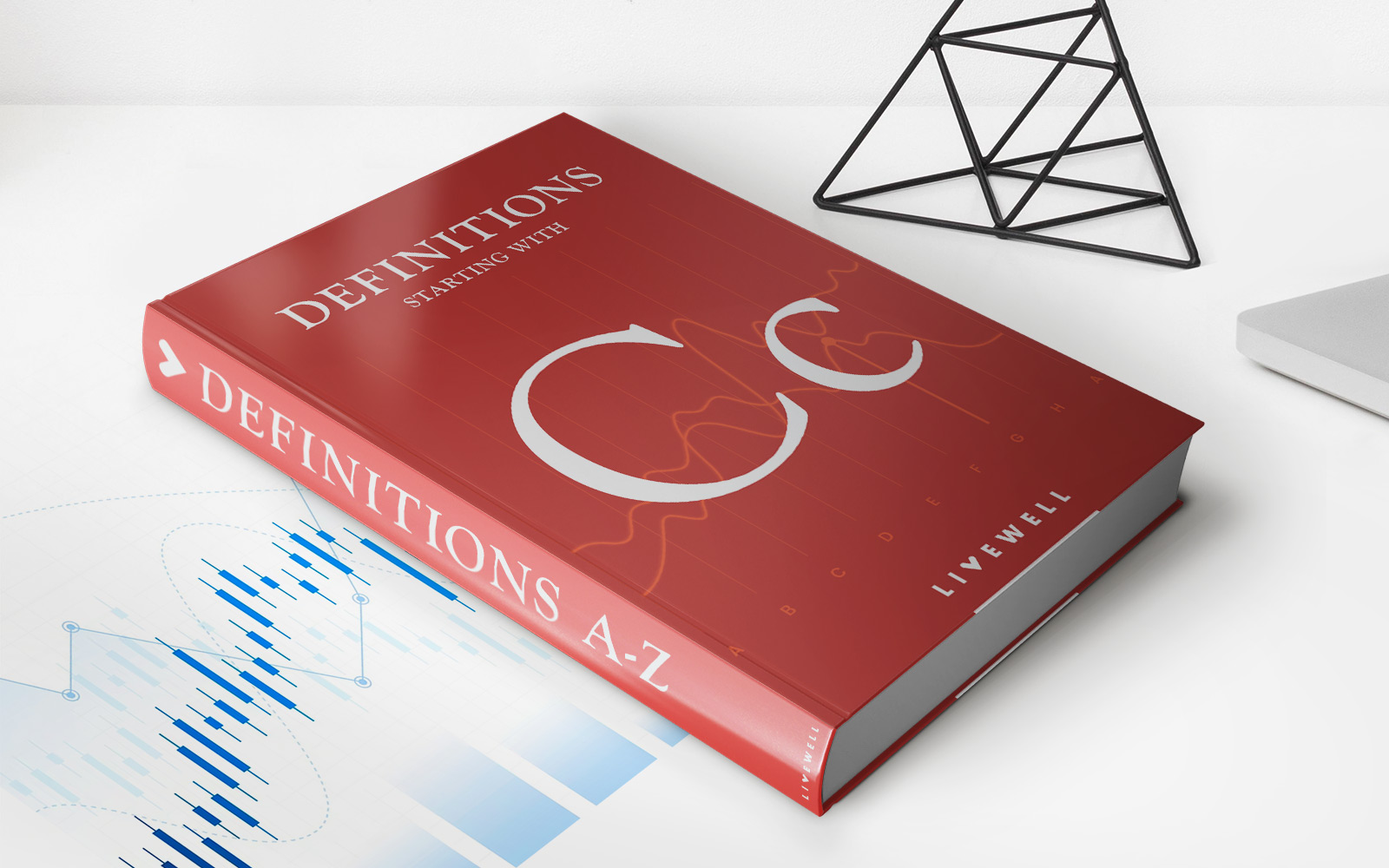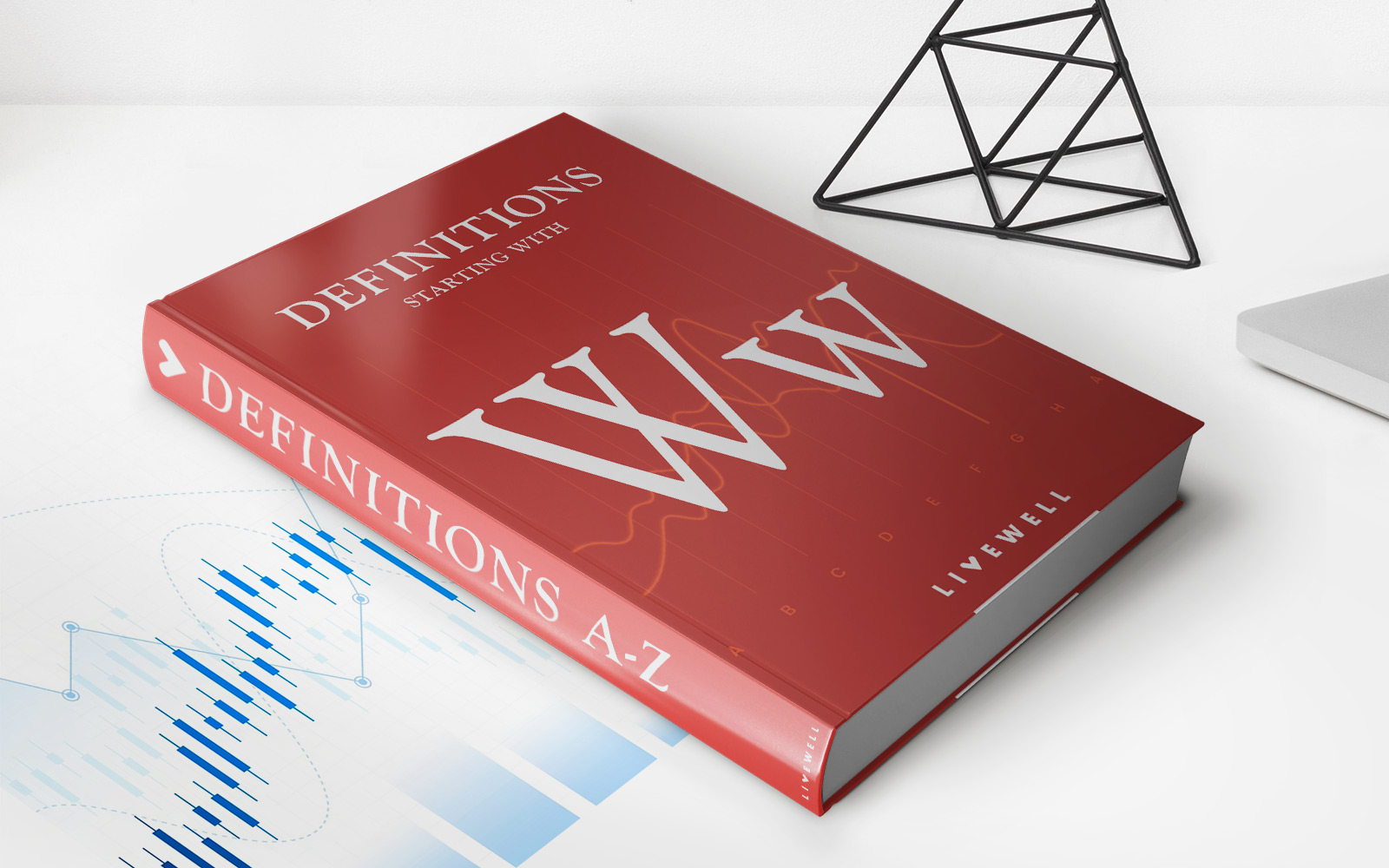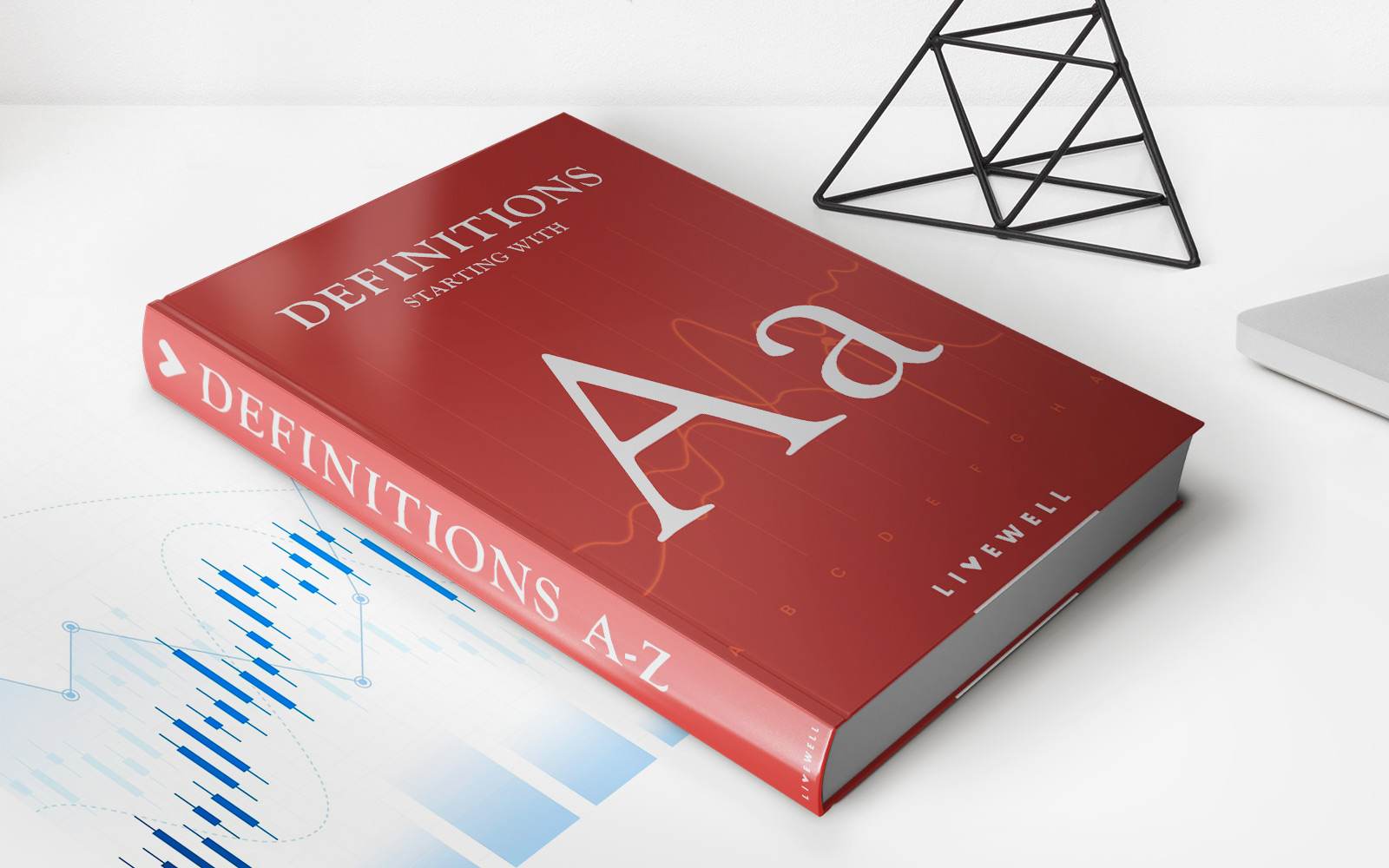Home>Finance>What Is The Difference Between Revolving And Installment Credit


Finance
What Is The Difference Between Revolving And Installment Credit
Modified: March 6, 2024
Learn the key distinctions between revolving and installment credit in the world of finance and gain a better understanding of how they differ for personal financial management.
(Many of the links in this article redirect to a specific reviewed product. Your purchase of these products through affiliate links helps to generate commission for LiveWell, at no extra cost. Learn more)
Table of Contents
Introduction
When it comes to managing personal finances, understanding the various types of credit is essential. Two common credit options are revolving credit and installment credit. Both types allow individuals to borrow money, but they differ in terms of the repayment structure, interest rates, and overall flexibility.
Revolving credit refers to a line of credit that is open-ended and allows borrowers to access funds up to a predetermined credit limit. This type of credit allows individuals to repeatedly borrow and repay money as needed. On the other hand, installment credit involves borrowing a fixed amount, which is repaid over a specific period of time in regular installments.
Understanding the difference between revolving and installment credit is crucial for individuals seeking to make well-informed financial decisions. In this article, we will delve into the details of each type of credit, explore their key differences, discuss their impact on a credit score, and provide examples to illustrate their usage in real life.
By gaining a solid understanding of these credit options, you will be better equipped to make informed decisions that align with your financial goals and needs. Whether you need a flexible credit option or a structured repayment plan, understanding revolving and installment credit will help you navigate the complex world of personal finance.
Definition of Revolving Credit
Revolving credit is a type of credit that provides individuals with a predetermined maximum borrowing limit and allows them to borrow and repay funds as needed. This credit line is open-ended, meaning that borrowers can continuously borrow money as long as they do not exceed the established credit limit.
One of the key features of revolving credit is the flexibility it offers. Unlike installment credit, which has a fixed repayment term, revolving credit allows borrowers to choose when and how much to borrow and repay. With revolving credit, borrowers have the freedom to make minimum payments and carry a balance, or pay off the full amount owed each month.
Revolving credit is typically associated with credit cards and lines of credit. Credit cards are a common form of revolving credit, providing users with a card that can be used to make purchases within the specified credit limit. The outstanding balance on the credit card can be paid in full each month or carried forward with the accrual of interest charges on the unpaid balance.
Lines of credit, on the other hand, are revolving credit accounts that give borrowers access to a pool of funds they can draw from as needed. These lines of credit are often used for larger expenses or to bridge the gap between paychecks.
It’s important to note that revolving credit often comes with higher interest rates compared to installment credit. The interest charged on the outstanding balance is based on the average daily balance, and if the balance is not paid off in full each month, interest charges can accumulate over time.
In summary, revolving credit provides individuals with a flexible borrowing option that allows them to access funds up to a predetermined credit limit. With the ability to borrow and repay as needed, revolving credit offers convenience and flexibility for those who manage their credit responsibly.
Definition of Installment Credit
Installment credit is a type of credit where borrowers receive a fixed amount of money upfront and agree to repay it over a specified period of time in regular installments, usually monthly. Unlike revolving credit, which allows for ongoing borrowing and repayment, installment credit has a structured repayment plan with fixed payment amounts and a predetermined end date.
When taking out an installment loan, such as a car loan or a mortgage, borrowers receive the full loan amount at the beginning of the loan term. They then make regular payments, typically including both principal and interest, until the loan is fully paid off. The repayment term can vary depending on the type of installment credit and the agreement between the lender and the borrower.
One of the key characteristics of installment credit is predictability. Borrowers know exactly how much they need to pay each month, making it easier to budget and plan their finances. The fixed payments ensure that the loan will be fully paid off by the end of the term, helping borrowers build credit history and improve their creditworthiness.
Installment credit is commonly used for major purchases, such as buying a car or financing a home. Auto loans and mortgages are prime examples of installment credit. With auto loans, borrowers receive a lump sum to purchase a vehicle and agree to make monthly payments over a set period of time. Mortgages, on the other hand, provide borrowers with funds to purchase a property, and the repayment period can extend over several decades.
Interest rates for installment credit can vary depending on factors such as the borrower’s credit history, the loan amount, and the loan term. Generally, installment credit tends to have lower interest rates compared to revolving credit due to its structured and predictable nature.
In summary, installment credit is a type of credit that provides borrowers with a fixed amount of money upfront, which is then repaid in regular installments over a predetermined period of time. This type of credit offers predictability and stability, making it suitable for individuals who prefer structured repayment plans and want to make major purchases.
Key Differences between Revolving and Installment Credit
While both revolving credit and installment credit allow individuals to borrow money, there are several key differences that set them apart. Understanding these differences will help you determine which type of credit is best suited to your financial needs.
- Repayment Structure: The most notable difference between revolving credit and installment credit lies in their repayment structure. Revolving credit offers flexibility, allowing borrowers to choose when and how much to borrow and repay. They can make minimum payments or pay off the full balance each month. In contrast, installment credit has a fixed repayment plan with regular, predetermined payments over a specific period of time until the loan is fully paid off.
- Interest Rates: Another significant difference is the interest rates associated with each type of credit. Revolving credit, such as credit cards, typically carries higher interest rates, often compounded daily based on the average daily balance. Installment credit, on the other hand, usually comes with lower fixed interest rates since the repayment terms are predetermined and the risk is lower for lenders.
- Credit Limit: Revolving credit provides borrowers with a maximum credit limit, which determines the amount they can borrow at any given time. Once the credit limit is reached, additional funds cannot be borrowed until some or all of the outstanding balance is repaid. Installment credit, on the other hand, involves a one-time loan of a specific amount, and the borrower cannot access additional funds beyond what was originally agreed upon.
- Usage and Flexibility: Revolving credit offers greater flexibility and convenience. Borrowers can use the credit whenever they need it and for a variety of purposes. They can make multiple transactions and repay the balance over time. Installment credit is typically used for specific purposes, such as buying a car or financing a home, and the funds are disbursed upfront. The usage is restricted to the agreed-upon purpose, and borrowers cannot access additional funds beyond the loan amount.
- Impact on Credit Score: Both revolving credit and installment credit impact credit scores, but in different ways. Revolving credit, when managed responsibly, can positively impact credit scores by demonstrating a borrower’s ability to handle ongoing credit. Installment credit, on the other hand, helps build credit history by showing a borrower’s ability to make regular, timely payments over a fixed period of time.
Understanding the differences between revolving and installment credit allows borrowers to choose the type of credit that aligns with their financial goals and needs. Whether you need the flexibility of revolving credit or the structured repayment plan of installment credit, it’s important to carefully consider your financial situation and priorities before making a borrowing decision.
Repayment Structure
The repayment structure is a significant point of differentiation between revolving credit and installment credit. This aspect determines how borrowers repay the borrowed funds over time.
Revolving credit offers a flexible repayment structure. Borrowers have the choice to make minimum payments, which are typically a percentage of the outstanding balance, or pay off the full balance each month. By making minimum payments, borrowers can carry a balance forward and accrue interest on the unpaid amount. This flexibility allows individuals to manage their cash flow and make payments based on their financial circumstances.
On the other hand, installment credit has a structured repayment plan. Borrowers are required to repay a fixed amount of money in regular installments over a specific period of time. Each installment consists of both the principal loan amount and the accrued interest. The repayment term is predetermined at the time the loan is taken out, and the borrower knows exactly how many payments need to be made to fully repay the loan.
With revolving credit, borrowers have the option to continuously borrow and repay funds within the established credit limit. They can choose to pay only the minimum amount due or pay off the entire balance to avoid interest charges. The repayment amount varies based on the outstanding balance and the interest rate applied to that balance.
Installment credit, on the other hand, has fixed payments that remain consistent throughout the loan term. Borrowers must make the same payment amount each month until the loan is fully repaid. This structured repayment plan offers predictability, making it easier for borrowers to budget and plan their finances.
It’s important to note that the repayment structure of installment credit ensures that the loan will be fully paid off by the end of the term. This can be advantageous for those seeking to build credit history and improve their creditworthiness, as making regular, timely payments over time demonstrates responsible financial behavior.
In summary, revolving credit offers flexibility in the repayment structure, allowing borrowers to choose between minimum payments or paying off the full balance each month. Installment credit has a structured repayment plan with regular fixed payments until the loan is fully repaid, providing borrowers with predictability and a clear timeline for debt repayment.
Interest Rates
Interest rates play a crucial role in both revolving credit and installment credit, as they determine the cost of borrowing and impact the total amount repaid over time. However, the way interest is calculated and applied differs between these two credit options.
Revolving credit, such as credit cards, often comes with higher interest rates compared to installment credit. The interest charged on revolving credit is typically compounded daily based on the average daily balance. If the outstanding balance is not paid in full by the due date, interest charges will accrue on the unpaid amount. The interest rate on revolving credit can vary depending on factors such as the borrower’s creditworthiness and the terms set by the credit card issuer or lender.
With revolving credit, borrowers have the flexibility to carry a balance and make minimum payments. However, if they choose to carry a balance from one billing cycle to the next, it’s important to remember that interest charges will be applied to the remaining balance. Over time, high interest rates on revolving credit can result in significant interest costs and make it challenging to reduce the debt quickly.
On the other hand, installment credit typically has lower interest rates. When borrowers take out an installment loan, such as a car loan or a mortgage, the interest rate is fixed for the duration of the loan. This fixed interest rate provides borrowers with predictability, as the monthly payment remains consistent throughout the repayment term.
With installment credit, borrowers have a clear understanding of the total cost of borrowing upfront. The interest charges are incorporated into the fixed monthly payments, allowing borrowers to plan their budget accordingly. By making regular, on-time payments, borrowers can steadily reduce the principal balance and save on interest charges over time.
It’s important to consider the impact of interest rates when deciding between revolving credit and installment credit. While revolving credit provides flexibility, borrowers need to be mindful of the potentially higher interest costs associated with carrying a balance. On the other hand, installment credit offers the advantage of lower, fixed interest rates and the ability to plan for consistent payments throughout the loan term.
In summary, revolving credit often carries higher interest rates that are compounded daily based on the average daily balance. Installment credit, on the other hand, tends to have lower, fixed interest rates that are incorporated into the structured repayment plan. Understanding the interest rates associated with each type of credit is essential for choosing the most cost-effective borrowing option that aligns with your financial goals.
Credit Limit
The credit limit is an important factor to consider when comparing revolving credit and installment credit. It determines the maximum amount of funds that borrowers can access through their credit accounts.
In revolving credit, such as credit cards and lines of credit, borrowers are assigned a credit limit by the lender. This credit limit represents the maximum amount of money that can be borrowed. As borrowers make purchases or withdraw cash, the outstanding balance increases, but it cannot exceed the predetermined credit limit.
The credit limit on revolving credit accounts is based on various factors, including the borrower’s creditworthiness, income, and existing debt obligations. Lenders assess these factors to determine the credit limit that is appropriate for each individual borrower. It’s important to note that credit limits can be adjusted over time based on the borrower’s payment history, credit utilization, and overall creditworthiness.
On the other hand, installment credit does not have a credit limit like revolving credit. Instead, borrowers receive a fixed loan amount upfront, which is determined at the time of taking out the loan. For example, when securing a car loan or a mortgage, borrowers receive a specific loan amount based on the value of the car or property. This loan amount is not flexible and cannot be increased in the future.
With revolving credit, borrowers have the flexibility to borrow money multiple times within the credit limit. As they make payments and reduce the outstanding balance, the available credit increases. As long as the borrower does not exceed the credit limit, they can continue to access funds whenever needed.
Installment credit, however, does not allow for additional borrowing beyond the original loan amount. Once the loan is disbursed, borrowers cannot access more funds unless they apply for another loan. Installment credit is typically used for specific purposes, such as purchasing a car or financing a home, where the loan amount is predetermined based on the cost of the asset.
It’s important for borrowers to understand the credit limit associated with revolving credit. Staying within the credit limit and managing credit utilization responsibly can help maintain a good credit score. With installment credit, borrowers need to carefully consider their financial needs upfront, as they will not be able to access additional funds beyond the agreed loan amount.
In summary, revolving credit has a credit limit that determines the maximum borrowing capacity, while installment credit offers a fixed loan amount without a credit limit. Understanding the credit limit associated with each type of credit is essential for borrowing responsibly and managing your overall debt obligations effectively.
Usage and Flexibility
The usage and flexibility of revolving credit and installment credit differ significantly, catering to different financial needs and circumstances.
Revolving credit offers users a high degree of flexibility in terms of usage. Borrowers with credit cards can make purchases, pay bills, and withdraw cash up to their credit limit. They can choose to make minimum payments or pay off the full balance each month. The revolving nature of this credit allows borrowers to borrow and repay funds repeatedly as long as they stay within the credit limit.
Revolving credit is particularly useful for day-to-day expenses, emergency situations, and managing cash flow. It provides convenient access to funds without the need to reapply for a new loan each time money is needed. Borrowers can use revolving credit for various purposes, such as paying for groceries, utilities, travel expenses, or unexpected medical bills.
Another advantage of revolving credit is the flexibility in repayment. Borrowers can choose to make minimum payments, which can be a percentage of the outstanding balance, or pay off the full balance to avoid interest charges. This flexibility allows individuals to manage their cash flow, especially during times when income may be irregular.
On the other hand, installment credit offers a different type of usage and flexibility. Installment loans are typically used for specific purposes, such as buying a car or financing a home. The loan amount is disbursed upfront, and borrowers cannot access additional funds beyond the agreed loan amount.
The usage of installment credit is restricted to the purpose for which the loan was taken out. For example, a car loan must be used for purchasing a vehicle, while a mortgage is specifically for financing a property. This ensures that installment credit is utilized for specific needs and not for everyday expenses or discretionary spending.
While the usage of installment credit is restricted, it does offer flexibility in terms of repayment. Borrowers make regular fixed payments over a specific period of time until the loan is fully paid off. This predictable repayment plan allows borrowers to budget effectively and plan for consistent payments throughout the loan term.
Understanding the usage and flexibility of each type of credit is crucial in choosing the right option for your financial needs. Revolving credit is more versatile and adaptable for day-to-day expenses and managing cash flow, while installment credit is geared towards specific purposes and provides a structured repayment plan.
In summary, revolving credit offers flexibility in terms of usage, allowing borrowers to access funds for various purposes and make minimum payments or pay off the full balance. Installment credit, on the other hand, is used for specific purposes and provides a structured repayment plan over a fixed period of time.
Impact on Credit Score
Both revolving credit and installment credit have an impact on an individual’s credit score, which is a numerical representation of their creditworthiness. Understanding how these types of credit affect credit scores is important for managing personal finances effectively.
Revolving credit plays a significant role in determining credit scores. One of the key factors considered in credit scoring models is the credit utilization ratio, which is the percentage of available credit that a borrower has used. Maintaining a low credit utilization ratio, ideally below 30%, demonstrates responsible credit usage and can positively impact credit scores.
With revolving credit, borrowers have the flexibility to continually borrow and repay funds within their credit limit. By keeping credit card balances low and making timely payments, borrowers can maintain a healthy credit utilization ratio and strengthen their credit scores. Conversely, using a high percentage of the available credit limit can have a negative impact on credit scores.
Additionally, credit issuers and lenders also evaluate factors such as payment history and the length of credit history when determining creditworthiness. Making payments on time and consistently over a period of time is crucial for building a positive credit history and improving credit scores.
Installment credit also plays a role in credit scoring. Similar to revolving credit, payment history is a crucial factor in determining creditworthiness. Making on-time payments for installment loans demonstrates responsible financial behavior and positively impacts credit scores. Consistently making payments as scheduled and paying off the loan in full within the agreed term can help improve credit scores.
Furthermore, installment credit contributes to the credit mix, which is another important factor in credit scoring models. Having a diverse mix of credit accounts, such as a combination of revolving credit and installment credit, shows lenders that the borrower can handle different types of credit responsibly.
It’s important to note that the impact on credit scores is dependent on individual financial behaviors and overall credit management. Timely payments, low credit utilization, and responsible borrowing habits contribute to healthy credit scores, regardless of whether the credit is revolving or installment in nature.
In summary, both revolving credit and installment credit have an impact on credit scores. Maintaining low credit card balances and making on-time payments for revolving credit can positively affect credit scores. Making consistent payments and fulfilling the obligations of installment loans also contributes to building a positive credit history. Responsible borrowing and managing credit wisely are key to improving and maintaining good credit scores.
Examples of Revolving and Installment Credit
Understanding the concepts of revolving credit and installment credit is easier when we explore some real-life examples of each.
One common example of revolving credit is a credit card. When individuals apply for a credit card, they are typically assigned a credit limit. They can use the credit card to make purchases up to that limit. Each billing cycle, a statement is generated, detailing the outstanding balance. Borrowers have the option to pay off the full balance by the due date or make a minimum payment and carry the remaining balance forward. Credit cards provide borrowers with the flexibility to continuously borrow and repay funds as long as they stay within their credit limit.
Another example of revolving credit is a line of credit. This type of credit gives borrowers access to a pool of funds that they can use as needed. Just like with credit cards, borrowers can borrow and repay funds within the specified credit limit. The advantage of a line of credit is its flexibility, allowing borrowers to tap into funds when unexpected expenses arise or when they need additional cash flow.
On the other hand, installment credit is often seen in loans for specific purposes. For instance, auto loans are a common form of installment credit. Borrowers receive a fixed loan amount to purchase a vehicle, and they repay the loan in monthly installments over a specified term. Each payment includes both principal and interest, and at the end of the loan term, the debt is fully repaid. Auto loans have a structured repayment plan and provide borrowers with a clear timeline for paying off the loan.
Mortgages are another prominent example of installment credit. When individuals buy a home, they typically require a mortgage loan. This type of installment credit allows borrowers to finance the purchase of a property. They make regular mortgage payments over a long period, often spanning several decades, until the loan is completely paid off. Mortgages are typically characterized by lower interest rates compared to revolving credit, providing borrowers with the stability and predictability of fixed payments.
These examples illustrate the different applications and features of revolving credit and installment credit. Revolving credit, exemplified by credit cards and lines of credit, offers flexibility and continuous access to funds within a set credit limit. Installment credit, demonstrated through auto loans and mortgages, provides borrowers with a specific loan amount for a defined purpose and requires regular fixed payments over a predetermined term.
In summary, credit cards and lines of credit represent common examples of revolving credit, offering flexibility in borrowing and repayment. Auto loans and mortgages exemplify installment credit, with a fixed loan amount and structured monthly payments until the debt is fully repaid.
Conclusion
Understanding the differences between revolving credit and installment credit is crucial for individuals seeking to make informed financial decisions. While both types of credit allow borrowers to access funds, they differ in terms of repayment structure, interest rates, credit limit, usage, and impact on credit scores.
Revolving credit, such as credit cards and lines of credit, offers flexibility and convenience. Borrowers can choose when and how much to borrow and repay, within the established credit limit. However, revolving credit often carries higher interest rates and requires responsible credit management to avoid accumulating high levels of debt.
On the other hand, installment credit, like auto loans and mortgages, provides borrowers with a fixed loan amount that is repaid over a specific period of time in regular installments. Installment credit offers structured repayment plans, lower interest rates, and clear timelines for debt repayment. It allows individuals to make planned payments and build credit history by demonstrating responsible repayment behavior.
Both types of credit have an impact on credit scores, with responsible borrowing and timely payments contributing to positive credit history. By maintaining low credit utilization, making on-time payments, and diversifying credit account types, individuals can improve and maintain healthy credit scores.
In conclusion, the choice between revolving credit and installment credit depends on individual financial needs and preferences. Revolving credit provides flexibility and easy access to funds, suitable for day-to-day expenses and managing cash flow. Installment credit, on the other hand, offers a structured repayment plan and is often used for specific purposes or larger purchases.
Understanding the nuances of revolving credit and installment credit empowers individuals to make informed decisions about their borrowing needs. By carefully considering factors such as repayment structure, interest rates, credit limits, and usage, individuals can choose the credit option that best aligns with their financial goals and supports responsible financial management.














